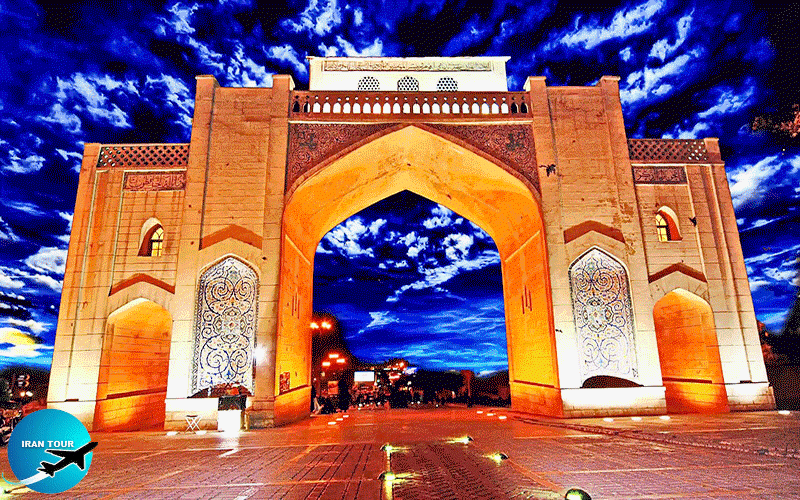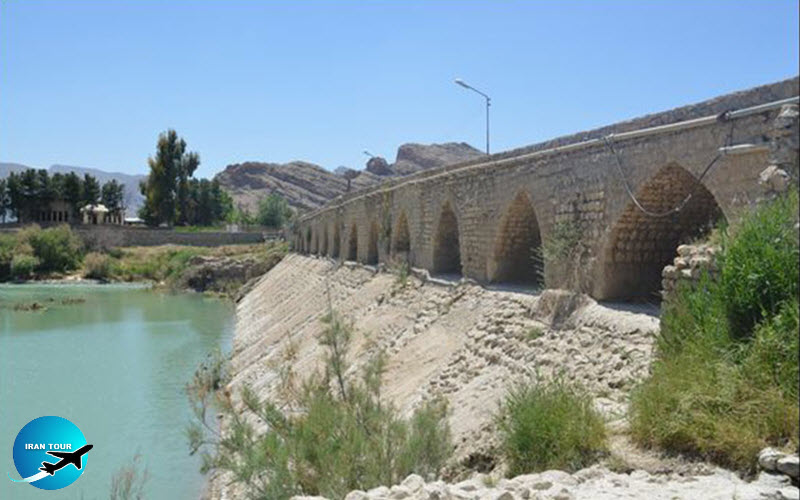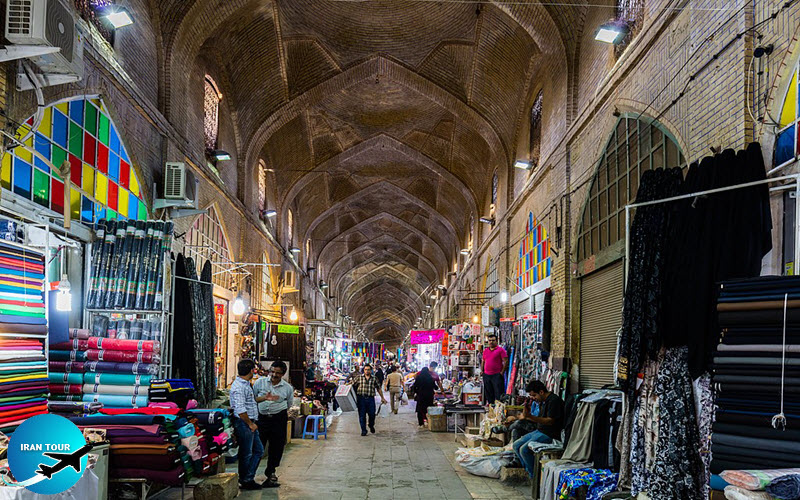Copyright 2020 - 2021 irantour.tours all right reserved
Designed by Behsazanhost
Shiraz during the Buyid Period
Shiraz during the Buyid Period
The prosperity of Shiraz increased when the Buyid rulers chose it to be one of their principal seats of power. The city was made the capital of Ali Emad al-Dowleh, the eldest of three brothers who founded the Buyid Empire. He spent much time in the city, died here, and was reportedly buried in the vicinity of the Mausoleum of Ali ibn Hamzeh. The name of the other brother, Rokn al-Dowleh, has survived in the name of Roknabad, the famous water qanat* of Shiraz, which was constructed near the Allah Akbar Gorge. However, the fortunes of the city reached their apogee during the rule of his son Azod al-Dowleh, from about 950 to 983.
 |
| Qoran Gate - Shiraz - Buyid Period |
One of the medieval historians called Azod al-Dowleh (whose personal name was Abu Shoja Fana-Khosrow) “the best of the famous descendants of the Buyid house”, and most scholars concur with this opinion. This Buyid prince was not only a fearless soldier and a wise ruler but also a poet and a generous patron of the arts. Mutannabi, one of the greatest Arab panegyrists, received such a great welcome at Azod al-Dowleh's court that he asked for the ruler's permission to settle in Shiraz. Unfortunately, while on his way to Baghdad, where the poet planned to collect his family, his caravan, laden with gifts from the ruler, was assaulted by thieves: Mutannabi was murdered and all the royal gifts were stolen. Azod al-Dowleh founded in Shiraz a fine library and a fully-equipped hospital, both highly praised in medieval history books. An ardent supporter of Shiite Islam, he nevertheless was a very liberal ruler, and followers of different religions lived peacefully in his dominion. Zoroastrians, Christians, and Jews had their own temples, many of which were maintained at the expense of the crown. One of the royal ministers was a Christian called Nasr ibn Harun. It is known that in 980, when a group of Muslim fanatics, having killed many Zoroastrians and ruined their houses, attacked the Zoroastrian quarters of Shiraz, Azod al-Dowleh, who was in Baghdad in that time, sent his troops to put down the rebellion, punish its instigators, and provide help for the suffering families. Some of the beneficent expenditures of Azod al-Dowleh's state included financial assistance to families with newborns, widows, and orphans, and loans to poor families.
 |
| Amir Dam - Shiraz - Buyid Period |
However, like most medieval rulers, Azod al-Dowleh was harsh and cruel. His envoys preferred to commit suicide rather than report a failed mission to their master. The prince is also infamous as the first ruler to order the execution of a convict under the feet of an elephant. Azod al-Dowleh was particularly intolerant ant with robbers; once, in a campaign against caravan thieves, he is said to have purposely sent out a caravan with barrels of poisoned wine, which all the thieves drank and died. When one of his concubines expressed an unbounded love for her master, Azod al-Dowleh, alarmed that he might also be enamored of her and thus distracted from state affairs, ordered the poor creature to be drowned.
During Azod al-Dowleh's rule, Shiraz became so populous that the ruler had to found a satellite town in its suburbs, called - in the Sasanid manner - Gerd Fana-Khosrow; the common people, however, called it Suq al-Emir (Emir's Bazaar), after a flourishing market located there. Gerd Fana-Khosrow was primarily intended to house the military garrisons, but historians have also reported the existence of a magnificent palace built there for the Buyid sovereign. One wrote, "Immense sums were spent on the gardens, a league in breadth; and the houses around this were occupied by wool-weavers, brocade makers, and others, all craftsmen whom the Buyids had brought from many distant lands to settle in Fars. Like many other independent rulers who rose up in Iran during the 9th and 10th centuries, Azod al-Dowleh was a fervent adherent! to old Persian traditions. A description of the magnificent Nouruz ceremonies held in Gerd Fana-Khosrow has found its way into numerous historical accounts. The names of days and months were used as they were in the old Persian calendar, and only the year followed the newly-introduced Arab lunar calendar. Surviving in Persepolis is an inscription from Azod al-Dowleh's grandson, Emad al-Dowleh Abu Kalenjar, who reports his victory over Seydan and Faruq on the Bahman day (according to the Old Persian calendar, the second day of the month) of the Aban month (the eighth month of the old Iranian calendar) of 418 A.H. (Muslim year), roughly corresponding to 24 November 1027 A.D.
 |
| Vakil Bazaar originally was established by the Buwayhids in the 11th century AD |
Shiraz owed many of its fine structures to the energy and foresight of Azod al-Dowleh. Although most of these structures have disappeared, a dam and bridge, known to this day as the Emir's Dam (p215), still stands on the Kor River. The original structure of the Koran Gate (pp195. 196) also belongs to this period. Ibn Miskaviyeh, the eminent philosopher and historian who was also a state treasurer and head supervisor of the king's library in Shiraz, wrote, on Azod al-Dowleh's death, "He accomplished whatever he pleased in this world, and I hope that in another world he will also be pleased!
Azod al-Dowleh was succeeded first by his elder son, Sharaf al-Dowleh, and then by his younger son, Baha al-Dowleh. These princes ruled in Baghdad, while Shiraz was passed on to their middle brother Samsam al-Dowleh, who is said to have been blinded by his elder brother in the family quarrels, which were fast undermining the Buyids' power. Samsam al-Dowleh is responsible for building the ramparts around Shiraz, which until his reign had remained unenclosed. (The turbulence of his rule gave him good reason to fortify his capital). Of the eight gates which existed at that time, six coincide with the modern entranceways to the city.
- Details
- Category: Shiraz Tourism